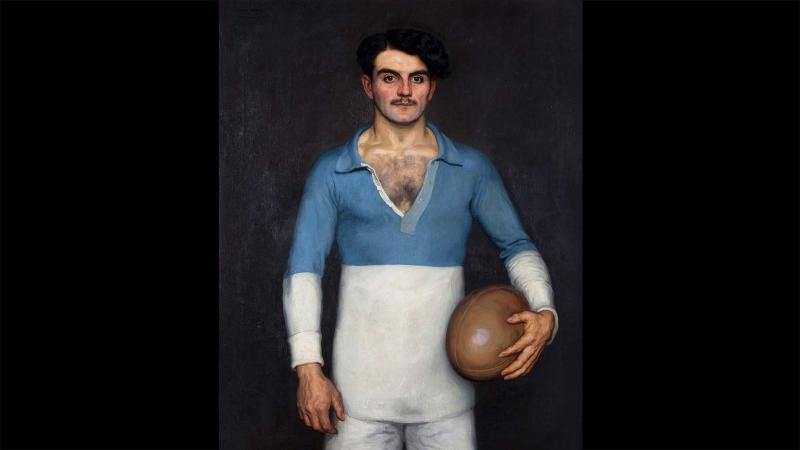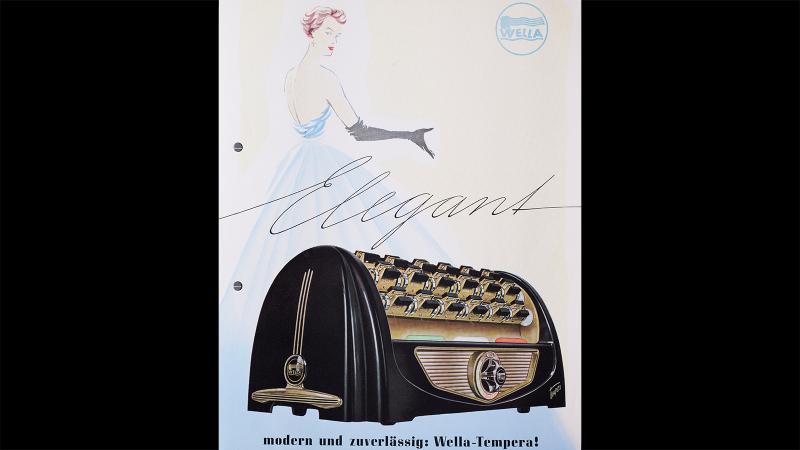Wella Company is partnering with the Musée des Arts Décoratifs in Paris to present the ‘Des Cheveux et des Poils’ exhibition from April 5, 2023 to September 17, 2023.
The exhibition and partnership with the distinguished Musée des Arts Décoratifs marks Wella Company’s first global showcase.
The exhibition demonstrates how hairstyles and the grooming of human hair have contributed to the construction of appearances for centuries. Hair is an essential aspect of one’s identity and has often been used as a means of expressing our adherence to a fashion, a conviction, or a protest while invoking much deeper meanings such as femininity, virility, and negligence, to name just a few.
The exhibition explores through 600 works, from the 15th century to nowadays, the themes inherent in the history of hairstyles, but also the questions related to facial and bodily hair. The trades and skills of yesterday and today are highlighted with their iconic figures: Lonard Autier (favorite hairdresser of Marie-Antoinette), Monsieur Antoine, the Carita sisters, Alexandre de Paris, and more recently studio hairdressers. Great names in contemporary fashion such as Alexander McQueen, Martin Margiela, or Josephus Thimister are present with their spectacular creations made from this unique material that is hair.
The exhibition highlights some of Wella Company’s preeminent contributions across products, services and tools, including:
- The first hair dryers with built in motors, and other archival hair tools
- Historic marketing materials for products including Wella-Koleston, “the first hair color cream in a tube.” Today, Koleston Perfect by Wella Professionals remains the #1 global hair color.
- Never-before-seen work by Wella Professionals Global Creative Artist Alexis Ferrer
Nearly 150 years later and now in its third year as an independent company, Wella Company and its brands continue to innovate and transform the hair care, color, and styling landscape today.
The exhibition is presented in the Christine & Stephen A. Schwarzman’s fashion galleries of the Musée des Arts Décoratifs. The scenography will be created by David Lebreton of the Designers Unit agency.

From the Museum, A Description of the Exhibition:
Fashions and Extravagances
The first part of the exhibition opens with the study of the evolution of feminine hairstyles, a real social indicator and marker of identity. In the Middle Ages, obeying the command of Saint Paul, the wearing of the veil imposes itself on women until the 15th century. Gradually, they abandon it in favor of extravagant hairstyles that are constantly renewed. In the 17th century, the hairstyle “to the Hurluberlu” (dear to Madame de Sévigné) and “to the Fontange” (after the name of Louis XIV’s mistress) are emblematic of real fashion phenomena.
After the hairless faces of the Middle Ages, a turning point occurred around 1520 with the appearance of the beard, symbol of courage and strength. In the early 16th century, the three great Western monarchs: Francis I, Henry VIII, and Charles V were young and wore beards, which were then associated with the virile and warrior spirit. From the 1630s until the end of the 18th century, the hairless face and the wig were the hallmarks of courtiers. Facial hair did not reappear until the early 19th century with the mustache, sideburns, and beard: this century was by far the hairiest in the history of men’s fashion. A multitude of small objects used (mustache wax, brushes, curling irons, wax, etc.) testify to this enthusiasm for mustaches and beards. During the 20th century, the rhythm of bearded, mustached, and smooth faces continued, until the return of the beard among Hipsters in the late 1990s. The maintenance of hairiness among these young urbanites has given rise to the profession of barber, which had disappeared since the 1950s. Today, the thick beards tend to give way to the mustache that had deserted faces since the 1970s.
The choice of keeping, eliminating, hiding, or displaying hair on other parts of the body is also a subject of history that the exhibition addresses through the representation of nude bodies in visual arts and written testimonials. Hairiness is rare, or even absent from ancient painting. The hairless body is synonymous with the antique and idealized body, while the hairy body is associated with virility, or even triviality. Only enthusiasts of virile sports such as boxing and rugby, as well as erotic illustrations or medical engravings, show individuals covered in hair. Around 1910-1920, when women’s bodies were exposed, advertisements in magazines touted the benefits of hair removal creams and more efficient razors to eliminate them. In 1972, actor Burt Reynolds posed naked, hairy body for Cosmopolitan magazine, but 50 years later, an abundance of hair is no longer in fashion. Since 2001, sportsmen being photographed naked for calendars like Les dieux du stade (The Gods of the Stadium) have had rigorously controlled hairiness.
Intimacy, Hairpieces and Colors
Hair styling is an intimate act. Moreover, a well-born lady could not show herself in public with her hair down. A painting by Franz-Xaver Winterhalter, dated 1864, depicting Empress Sissi in a robe and with her hair untied, was strictly reserved for Franz Joseph’s private cabinet.
Louis XIV, who became bald at a very young age, adopted the so-called “bright hair” wig, which he then imposed on the court. In the 20th century, Andy Warhol had the same misfortune: the wig he wore to hide his baldness became an icon of the artist. Nowadays, hairpieces and wigs are used in high fashion, during fashion shows or, of course, to compensate for hair loss.
The natural hair colors and their symbolism are studied along with what they convey. Blonde is said to be the color of women and childhood. Red hair is attributed to sultry women, witches and some famous stage women. As for black hair, it would betray the temperament of brown and brunettes. From the experimental colorations of the 19th century to the more certain dyes from the 1920s: artificial colors are not forgotten. The work of the hairdresser Alexis Ferrer who makes digital prints on real hair is also presented.
Trades and Know-how
The exhibition reveals the different hair professions: barbers, barber-surgeons, hair stylists, wigmakers, ladies’ hairdressers, etc., through archival documents and a host of small objects: signs, tools, various products, and the astonishing perming machines and dryers of the 1920s. In 1945, the creation of haute coiffure elevated the profession to the rank of an artistic discipline and a French savoir-faire. Twentieth-century hairdressing is marked by Guillaume, Antoine, Rosy and Maria Carita, Alexandre de Paris styling princesses and celebrities. Nowadays, great hairstyling is mainly expressed during the fashion shows of prestigious fashion houses. Sam McKnight, Nicolas Jurnjack and Charlie Le Mindu were invited to the exhibition to create extraordinary hairstyles for top models and show business personalities.

A Look Back at a Century
Finally, a special focus will allow us to evoke the iconic hairstyles of the 20th and 21st centuries: the 1900 chignon, the 1920s garçonne haircut, the 1930s permed and notched hair, the 1960s pixie and sauerkraut, the 1970s long hair, the 1980s voluminous hairstyles, the 1990s gradations and blond streaks, not to mention afro-textured hair.
The arrangement of hair in a particular form can reveal the belonging to a group and manifest a political and cultural expression in opposition to society and the established order. More ideological than aesthetic, the Iroquois crest of the punks, the neglected hair of the grunges or the shaved heads of the skinheads are strong moments of hair creativities.
Wearing the hair of another, known or unknown, has an eerie dimension, and this superstition seems well-entrenched. Despite these apprehensions, some creators choose to transcend this familiar material into fashion objects. This is the case of contemporary designers such as Martin Margiela, Josephus Thimister and Jeanne Vicerial. The question of identity, treated lightly or more deeply, is often at the heart of the reasoning, whether the hair is real or fake.
The Musée des Arts Décoratifs has benefited from exceptional loans from the Château de Versailles, the Musée des Beaux-Arts d’Orléans, the Musée du Louvre and the Musée d’Orsay.